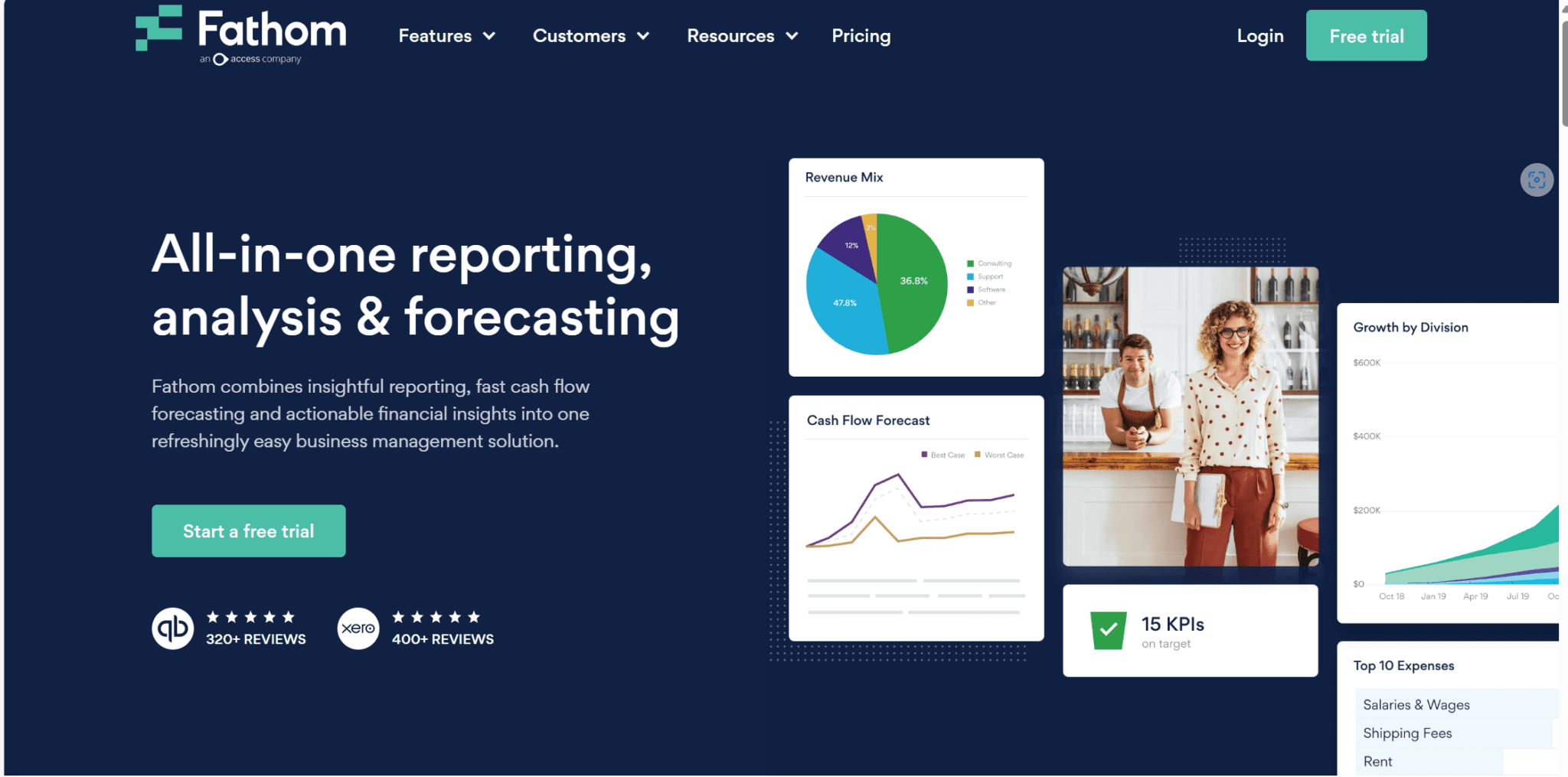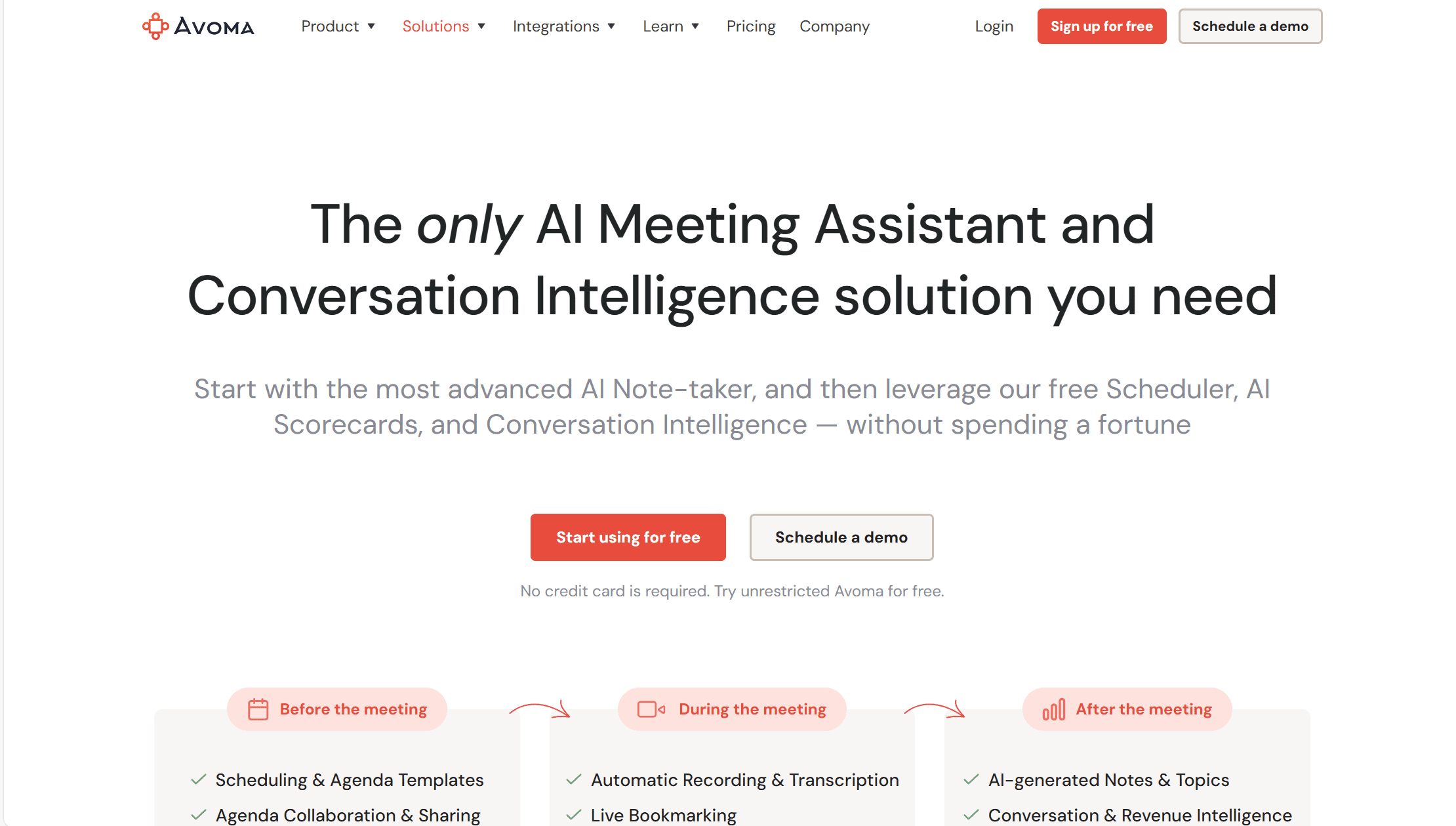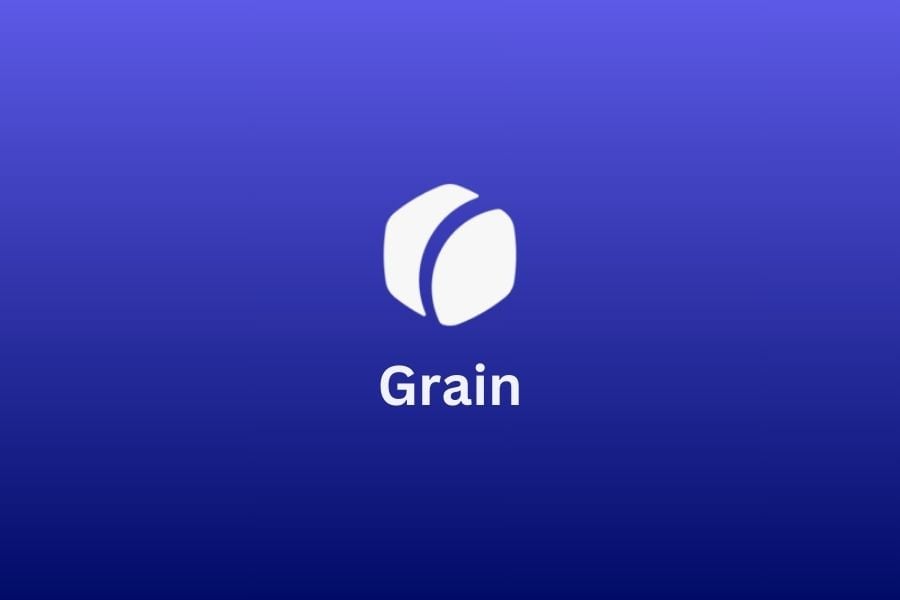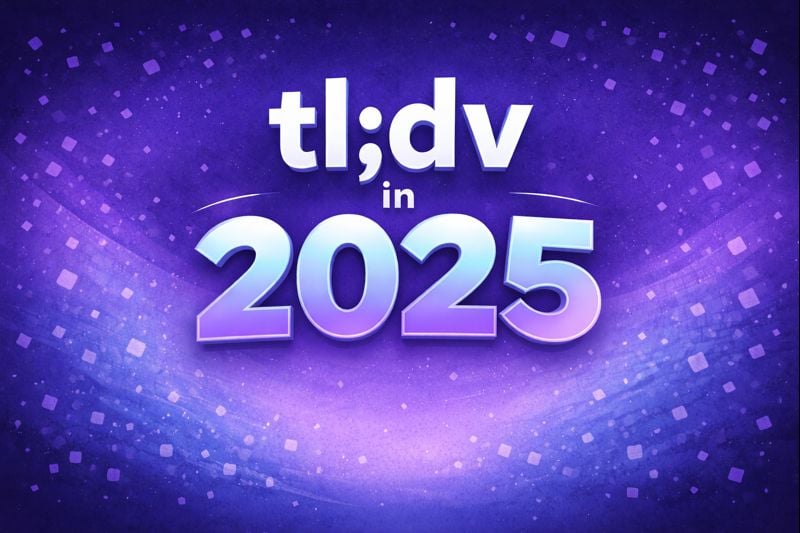Grain утверждает, что делает разговорный интеллект простым, чтобы вы могли сосредоточиться на важных вещах: тренировке своей команды и заключении большего количества сделок. Несмотря на то, что это решение, безусловно, хорошо работает, является ли оно лучшим на рынке, или есть альтернативы Grain , которые предлагают больше выгоды за ваши деньги?
Именно это мы и хотим выяснить. Мы составили список конкурентов Grain , чтобы вам не пришлось это делать. Все они - сила, с которой нужно считаться, но у каждого бизнеса есть место только для одного регистратора совещаний. Какой из них подходит вам и вашему бизнесу?

Grain Обзор
Если вы пришли сюда в поисках лучших хлопьев для выпечки хлеба, то вы попали не по адресу. Если, конечно, под хлебом вы не подразумеваете увеличение прибыли от ваших звонков по продажам. Мы говорим о записи совещаний с помощью искусственного интеллекта, Grain.com.
Вкратце, это бот, который присоединяется к вашим встречам, записывает их, транскрибирует, а затем невероятно упрощает использование транскриптов и видео впоследствии. В противном случае в этом нет особого смысла. Вы можете создавать ролики, добавлять комментарии, делать заметки и даже получать резюме ИИ о ваших встречах. Вы можете задавать вопросы интуитивному искусственному интеллекту Grain, чтобы получить мгновенные ответы о встрече.
Чем он так хорош для отделов продаж?
Расшифровки
Grain обеспечивает живую транскрипцию, удаление слов-заполнителей и перевод на более чем 20 языков. Оно автоматически определяет, кто говорит, и даже позволяет создавать собственный словарь, чтобы можно было записывать и точно искать информацию на совещаниях, где используется жаргон.
Поиск стенограммы встречи во время или после разговора не составит труда. Вы также можете использовать искусственный интеллект Grainи немедленно получать ответы, выводы и резюме.
Все эти функции доступны благодаря простому в использовании пользовательскому интерфейсу, а значит, вы никогда не заблудитесь.
Shareability
Grain позволяет легко делиться звонками. Никто не хочет просматривать часовые совещания, а с Grain вам не придется этого делать. Создавайте фрагменты и делитесь ими с коллегами и заинтересованными лицами одним щелчком мыши. Будь то отрывок из разговора по продажам или фрагмент интервью, проведенного в ходе исследования пользователей, Grain позволяет делиться мнением клиента как никогда легко.
Интеграции
Несмотря на то, что Grain имеет несколько высококачественных интеграций, ему, безусловно, не хватает количества. Предлагая в общей сложности семь интеграций, Grain догоняет свои альтернативы в этом отношении.
Интеграции, которые он предлагает, можно увидеть ниже.

Чтобы быть понятным, Grain интегрируется с:
- Zoom
- Slack
- HubSpot
- Aircall
- Salesforce
- Доска объявлений
- Zapier
Интеграция Zapier, вероятно, является наиболее важной, поскольку она частично компенсирует отсутствие собственных связей. С помощью Zapier вы можете связать свой аккаунт Grain со многими другими сторонними платформами. Это просто добавляет дополнительный шаг.
Зачем меняться?
Пока все хорошо. Зачем кому-то искать альтернативы Grain ? Звучит как отличный инструмент для продаж, который поможет справиться с 10 газиллионами встреч менеджеров по продажам каждую неделю, не говоря уже об индивидуальных звонках торговых представителей или кропотливых интервью и последующем анализе, которому подвергаются исследователи пользователей.
Слабый свободный план
Во-первых, бесплатный план Grainявляется приемлемым, но ни в коем случае не сильным. Если вы хотите попробовать, прежде чем купить, Grain оставляет большинство своих возможностей без внимания. Конечно, есть бесплатная пробная версия. Но она ограничена по времени и оказывает ненужное давление на решение о покупке.
В бесплатном плане вы получите только стенограммы 20 встреч.
Интеграции
Несмотря на то, что интеграция в эту систему великолепна, у нее есть два недостатка.
- Они находятся за платными стенами. Интеграции Slack, Productboard и Zapier открыты только в плане Starter (15 долларов в месяц), а интеграции Aircall, Salesforce и HubSpot - только в плане Business (29 долларов в месяц).
- Всего 7. Некоторые из альтернатив Grain в этом списке имеют тысячи встроенных интеграций. Компании, у которых уже есть набор рабочих инструментов, могут столкнуться с трудностями при поиске способа бесшовной интеграции своих инструментов, что в первую очередь сводит на нет цель автоматизации Grain.
Ограниченный коучинг
Grainнесмотря на наличие огромного количества данных о встречах, которые можно использовать для глубокого анализа и обучения, предлагает лишь примитивную форму коучинга. Здесь нет настраиваемого playbooks или специального коучинга по продажам, но, к их чести, есть возможность получить достоверные данные о таких вещах, как время разговора торгового представителя, чтобы знать, когда слишком много - это слишком много.
Слабые предложения по поддержке
GrainПриоритетная поддержка начинает действовать только в тарифном плане Enterprise. Пользователям более низких тарифных планов, желающим обратиться за поддержкой, придется делать это по электронной почте. Чат отсутствует, а ответ на электронное письмо может занять несколько дней.
Как Grain оценивает G2?
Несмотря на положительные отзывы на сайте Grain , есть и ряд недостатков, отмеченных несколькими пользователями:
- Ограничения характеристик:
- Отсутствие живой аудиотранскрипции и поддержки нескольких языков на совещаниях.
- Некоторые проблемы с точностью транскрипции, особенно с акцентами.
- Ограниченная функциональность для управления общими папками и настройки поведения по умолчанию для общего доступа.
- Проблемы пользовательского опыта:
- Фильтрация отмеченных клипов/заметок могла бы быть более интуитивной.
- Иногда платформа испытывает трудности с подключением к вебинарам или интеграцией с дополнительными системами VoIP.
- Стоимость и доступность:
- Некоторые пользователи считают цены на бизнес-план высокими для малого и среднего бизнеса или стартапов.
- Ограниченные возможности бесплатной версии и необходимость в дополнительных образовательных ресурсах.
4 лучших альтернативы Grain
Давайте посмотрим на конкурентов Grainи отделим пшеницу от плевел...
1. tl;dv
tl;dv выводит разговорный интеллект на новый уровень. Оно вышло далеко за рамки простого регистратора встреч. Да, он записывает совещания. Да, он расшифровывает их. И да, оно даже мгновенно и автоматически отправляет резюме ИИ всем участникам сразу после завершения разговора. Но эти функции - лишь фундамент для чего-то гораздо большего. На самом деле, они настолько базовые для tl;dv , что вы можете получить неограниченное количество записей и расшифровок звонков бесплатно. Навсегда.
В бесплатном плане вы можете интегрировать его со Slack, электронной почтой и календарем. Это потому, что ценность выходит далеко за рамки основных функций.
Представьте: вы - менеджер по продажам, который хочет отследить определенное возражение, возникающее в ходе нескольких звонков с разными торговыми представителями. tl;dv предлагает аналитику по нескольким встречам, то есть вы можете получать повторяющиеся отчеты о конкретной информации по всем звонкам компании.
Кроме того, tl;dv предлагает playbooks и шаблоны для коучинга по продажам, чтобы вы могли повысить эффективность своих продаж с помощью неопровержимых доказательств. Инновационный искусственный интеллект анализирует время выступления ваших торговых представителей, количество заданных вопросов и контекст беседы, а также предлагает рекомендации по улучшению.
Как tl;dv сравнивается с Grain?
Для начала tl;dv решает три главных недостатка Grain.
- Бесплатный тарифный план. tl;dv имеет лучший в отрасли бесплатный тарифный план, предлагающий неограниченное количество записей разговоров, расшифровок и просмотров без необходимости тратить ни одного цента. Большинство основных функций тоже совершенно бесплатны, от временной метки до создания клипов. Вы даже получаете ограниченное количество функций искусственного интеллекта.
- Интеграции. tl;dv имеет более 5 000 встроенных интеграций, что делает его лучшей альтернативой Grain для тех, кто ставит во главу угла бесперебойную связь между всеми своими рабочими инструментами.
- Коучинг. Как уже говорилось, искусственный интеллект tl;dvиспользует информацию из записей ваших звонков по продажам, чтобы показать вам, что нужно улучшить. Grain предлагает базовую версию этой функции, которая подчеркивает соотношение разговоров и прослушивания, но не предлагает ряд настраиваемых playbooks , как tl;dv.
- Поддержка диалектов . tl;dv поддерживает десятки различных диалектов. Это делает транскрипты более доступными и точными для команд с сильным региональным акцентом.
- Поддержка клиентов. tl;dv предлагает бесплатный онлайн-чат для всех пользователей, что позволяет легко получить помощь, когда она вам нужна. Приоритетная поддержка разблокирована в первом платном плане: Pro (18 долларов в месяц).
Чтобы узнать, насколько tl;dv превосходит Grain по всем параметрам, ознакомьтесь с нашим подробным сравнением: tl;dv vs Grain.
Давайте сделаем преимущества еще более понятными tl;dv
Плюсы tl;dv
- Бесплатная интеграция искусственного интеллекта: tl;dv использует высококлассный искусственный интеллект для составления резюме, заметок и автоматического определения диктора.
- Бесплатные и мгновенные переводы: транскрипция tl;dvдоступна на более чем 40 языках для Zoom, MS Teams и Google Meet.
- Невероятный бесплатный план: Неограниченное количество бесплатных записей и расшифровок звонков Zoom, MS Teams и Google Meet .
- Простота в использовании: изящный дизайн tl;dv делает максимально простым в использовании как для новичков, так и для экспертов.
- Аналитика по нескольким встречам одновременно. Настройте регулярные отчеты, чтобы получать аналитические данные одновременно по нескольким встречам и непосредственно на вашу электронную почту.
- Коучинг продаж. Улучшайте работу отдела продаж, используя информацию, полученную в ходе звонков. Улучшите работу с возражениями и используйте шаблоны или пользовательские playbooks , чтобы персонализировать стратегию коучинга.
- Функции временных меток и тегов: отмечайте ключевые моменты встречи с помощью временных меток, чтобы быстро вернуться к нужному эпизоду. Также есть возможность отмечать тегами коллег в конкретных моментах встречи — они получат письмо со ссылкой прямо на этот фрагмент.
- 5 000+ интеграций: Передавайте временные метки и клипы совещаний непосредственно в Notion, Slack, HubSpot, Salesforce и еще 5 000 с помощью встроенных интеграций.
- Создание клипов и роликов: Сканируйте свою библиотеку и создавайте клипы и ролики с яркими моментами для подачи информации в максимально сжатом виде.
- Интуитивно понятная библиотека: Ищите нужные моменты по ключевым словам в библиотеке встреч, чтобы быстро находить нужную информацию в расшифровках.
tl;dv Конс
- Совместимость: Пока не доступен для Webex и BlueJeans.
Цены
Бесплатный тарифный план tl;dvукрепляет его место в верхней части этого списка альтернатив Grain . Вы можете начать работу уже сегодня без каких-либо условий. Кроме того, в зависимости от того, в каком регионе мира вы находитесь, вы можете получить скидку до 40 % на платные тарифные планы!
Особенности бесплатного плана
- Неограниченное количество видеозаписей и расшифровок.
- Запись звонков Google Meet, Zoom и MS Teams.
- Расшифровка на более 40 языках
- Неограниченное количество сводок по фрагментам с помощью ИИ
- Заметки по встречам, улучшенные с помощью ИИ в 10 раз
- Спросите ИИ от tl;dv - результат в 10 раз лучше
- ИИ-отчеты по нескольким встречам сразу - результат в 10 раз лучше
- Интеграция со Slack, электронной почтой и календарем
- Проставляйте временные метки и выделяйте нужные фрагменты
- Создавайте и обменивайтесь клипами
- Автоматическое распознавание участников разговора
- 3 загрузки в месяц
Платные подписки tl;dv открывают доступ к более чем 5000 интеграций, коучинговым материалам по продажам, неограниченному анализу нескольких встреч одновременно, регулярным отчетам, аналитике, загружаемым записям, настраиваемым параметрам общего доступа, приоритетной поддержке клиентов и многому другому.
Все подробности смотрите здесь.
tl;dv vs Grain
Мы свели альтернативы Grain и их характеристики в удобную таблицу для сравнения.
| Grain | tl;dv | |
| Бесплатный план? | 20 записи и стенограммы заседаний | Неограниченное количество записей и расшифровок |
| AI? | Да, для составления резюме, основных заметок и ограниченного обучения | Да, для составления сводок, повторяющихся отчетов, анализа нескольких встреч и мощного коучинга по продажам (включая многие функции бесплатно). |
| Цена платных планов | $15-29+ / месяц | $18-59+ / месяц |
| Google Meet? | Да | Да |
| Zoom и MS Teams | Да | Да |
| Видеозаписи? | Да | Да |
| Автоматизированная транскрипция? | Да (20+ языков) | Да (40+ языков) |
| Признание спикеров? | Да | Да |
| Отмечать моменты в режиме реального времени? | Да | Да |
| Интеграции CRM? | Да (HubSpot и Salesforce разблокированы в тарифном плане "Бизнес"). | Да (HubSpot, Salesforce и десятки других разблокированы в тарифном плане Pro). |
| Интеграция с Slack? | Да ($15 в месяц) | Да (бесплатно) |
| Поиск по всем стенограммам заседаний | Да | Да |
| Отмечать коллег? | Нет | Да |
| Просмотр аналитики | Да | Да (даже на бесплатном) |
| Создавать клипы? | Да | Да (даже на бесплатном) |
| Анализ времени выступления для респондентов | Да | Да |
| Прослушивание оповещений по ключевым словам | Нет | Да |
Хотя Grain - довольно необычный инструмент для проведения совещаний, мы считаем, что tl;dv превосходит его. tl;dv выводит возможности помощников по проведению совещаний с искусственным интеллектом на совершенно новый уровень, который только усиливается благодаря его щедрому бесплатному тарифному плану.
Все сводится к следующему: tl;dv может делать все, что делает Grain , и даже больше, за меньшие деньги.
2. Fathom

Fathom еще один отличный конкурент Grain , который также имеет конкурентоспособный бесплатный тарифный план. Известный как отличный инструмент для расшифровки совещаний с помощью искусственного интеллекта, Fathom быстро и автоматически создает резюме совещаний, включая резюме пунктов действий, чтобы вы могли принимать решения быстрее и эффективнее. Как и Grain, он обеспечивает расшифровку в режиме реального времени, что может стать огромным бонусом, если вы хотите делать заметки на ходу.
Вы также можете использовать Fathom для удобной организации своих выводов в популярных инструментах для работы с документацией, таких как Google Docs, Notion или Asana. Создавая основные моменты в середине разговора, вы можете попросить мощный искусственный интеллект обобщить их простым щелчком мыши. Вы можете мгновенно синхронизировать свои заметки, сделанные в середине разговора, с остальными записями исследований, что упростит ваш рабочий процесс.
Запись встречи, а также все заметки, основные моменты и ролики будут доступны для скачивания сразу после завершения звонка.
Fathom Плюсы
- Автоматическое составление резюме. Fathom автоматически генерирует резюме совещаний, включая пункты действий.
- Легко делится данными. Он предназначен для обмена данными между различными платформами.
- Мощный искусственный интеллект. Генерируйте основные моменты в процессе разговора, а затем заставьте искусственный интеллект Fathomобобщить их простым щелчком мыши.
- Скачать мгновенно. Заседания и стенограммы доступны для мгновенного скачивания.
- Хорошие бесплатные возможности. Он бесплатен для личного использования и имеет 2-недельную бесплатную пробную версию для команды.
Fathom Cons
- Совместимость. Fathom доступен только с Zoom, MS Teams и Google Meet.
- Ограниченные переводы. Доступно только 6 языков.
- Сложная ценовая политика. Цены на Fathom могут быть довольно запутанными по сравнению с другими альтернативами Grain .
Цены
Fathom полностью бесплатен для личного использования, что делает его одним из лучших бесплатных планов среди всех конкурентов Grain . Для использования в командах, что наиболее актуально для менеджеров по продажам, Fathom требует приобретения платного тарифного плана. Для него предусмотрена бесплатная пробная версия, но после ее истечения вы останетесь без вариантов. Стоимость платного тарифного плана начинается от 50 долларов США в месяц и определяется по принципу "для каждой компании".
Grain против Fathom
Fathom определенно лучшее место для начала, если вы просто хотите протестировать инструменты. FathomИндивидуальный бесплатный план дает все. Grain не предлагает бесплатно даже базовую интеграцию со Slack, не говоря уже о продвинутых функциях искусственного интеллекта.
Для всестороннего сравнения Fathom и первого в этом списке рекордера совещаний, tl;dv, смотрите наш обзор: tl;dv vs Fathom.
3. Avoma

Avoma говорит о себе во весь голос. Они утверждают, что это единственный помощник по организации встреч с искусственным интеллектом, который вам нужен. Так ли это, или Avoma - тот самый конкурент Grain , которого вы так долго ждали?
Как tl;dv, Avoma взяла основные варианты использования ассистентов для встреч с искусственным интеллектом и устремилась с ними в будущее. В ней есть конкурентный разговорный интеллект, коучинг продаж и даже анализ доходов.
Как и в случае с tl;dv, в заметках Avomaесть возможность поиска, так что вы всегда сможете найти именно то, что ищете. Она также совместима с 8 различными платформами для видеоконференций - больше, чем любой другой помощник по организации встреч с искусственным интеллектом в этом списке. Это значит, что даже если ваша команда использует GoToMeeting или Bluejeans, вам не придется переключаться.
Avoma Плюсы
- Коучинг продаж и Playbooks. Avoma предлагает playbooks, шаблоны и панели управления для повышения квалификации ваших торговых представителей.
- Аналитика доходов. Аналитика сделок, предупреждения о рисках сделок и аналитика тенденций позволяют получить самые передовые сведения.
- Интеллектуальный анализ разговоров. Анализируйте звонки, отслеживайте ключевые слова, вопросы и манеру разговора, чтобы максимально повысить эффективность продаж.
- Ведение заметок. Делайте заметки в режиме реального времени во время видео- и аудиозвонков.
- Функция поиска. Удобный поиск по стенограммам и заметкам поможет вам найти то, что вы ищете.
- Совместимость. Работает с Google Meet, Zoom, MS Teams и др.
Avoma Cons
- Ограниченное количество интеграций. На Avoma больше интеграций, чем на Grain, но они довольно ограничены по сравнению с другими.
- Слабый бесплатный план. Бесплатный план слабее, чем другие альтернативы Grain .
Цены
Стартовый план Avomaначинается от $19 за пользователя в месяц и предлагает всего 2 400 минут транскрипции в месяц. План Plus взлетает до 49 долларов в месяц и открывает доступ к интеграции с CRM и неограниченному количеству транскрипций (то, что tl;dv предлагает в своем плане Pro). Бизнес-план обойдется вам в 79 долларов в месяц и откроет доступ к оценочным картам AI, а также к расширенному анализу разговоров и доходов.
Avoma Также есть план Enterprise, цена которого составляет 129 долларов в месяц.
Особенности бесплатного плана
- Запись и транскрипция (300 минут в месяц)
- Ограниченные заметки, созданные искусственным интеллектом
- Совместное ведение заметок
- Подготовка повестки дня
- Неограниченное количество планировщиков 1:1
Avoma также предлагает бесплатную 14-дневную пробную версию любого из своих тарифных планов, так что вы сможете опробовать его расширенные возможности в течение любого 2-недельного периода. Что касается самого бесплатного плана, то он, по сути, хуже, чем у Grain. Это может стать серьезным препятствием для команд, которые хотят попробовать, прежде чем купить, но это не конец света.
Grain против Avoma
AvomaИнтеллектуальное сопровождение переговоров - это великолепный инструмент, значительно превосходящий все, что сейчас предлагает Grain . Аналогичным образом, коучинг по продажам, анализ доходов и количество интеграций отличают эту систему от Grain в плане расширенных возможностей.
Однако вместе с расширенными возможностями приходят и расширенные цены. Цена выше, чем у большинства конкурентов Grain, а в более доступных тарифных планах не хватает качества.
4. Gong

Давайте не будем говорить об этом, Gong это чудовище. Единственная причина, по которой Gong не находится выше в этом списке, заключается в том, что он может быть до смешного дорогим. Если вашей команде не требуются суперпродвинутые функции любой ценой, он не по карману большинству команд.
С помощью сверхмощной аналитики искусственного интеллекта Gongпомогает торговым представителям совершенствовать свои навыки, выявлять высокопотенциальные лиды и повышать общую эффективность продаж. Gong - это гиперспециализированное решение для отделов продаж, независимо от их размера. Он участвует в ваших встречах с одной и только одной целью: увеличить ваши продажи.
Большинство других конкурентов Grain в этом списке многогранны, сосредоточены на работе по адресу remote и бесшовной асинхронной совместной работе с некоторыми специализированными функциями для отделов продаж. Gong - это продажи или ничего. Это может быть как плохо, так и хорошо; все зависит от потребностей вашего бизнеса.
Плюсы Gong
- Интеграции. Gong предлагает сотни интеграций, которые позволяют легко соединять между собой рабочие пространства.
- Анализ доходов. GongСовременная система анализа доходов позволяет прогнозировать продажи и помогает в осуществлении сделок.
- Коучинг по продажам. Gong предлагает индивидуальные playbooks, оценочные листы, шаблоны и тренинги по работе с возражениями.
- Анализ настроений. GongИИ анализирует настроения клиентов, чтобы приблизить вас к заключению сделки.
Минусы Gong
- Дорого. Цены наGong не только скрыты за звонками продавцов, но и печально известны, поскольку платформа создана для предприятий.
- Gong настолько ориентирован на отделы продаж, что нет смысла использовать его вообще, если вы не собираетесь максимально использовать его возможности для продаж.
- Длинный процесс регистрации. Чтобы получить доступ к сайту Gong, необходимо пройти через обручи.
- Навязчивые рекомендации. Некоторые рецензенты считают, что рекомендации Gongо том, как улучшить ваши продажи, могут быть назойливыми и нежелательными.
Цены на Gong
Чтобы получить доступ к ценам Gong, вам нужно договориться с их командой о продаже. Хотя это может показаться ненужным препятствием (так оно и есть), это сделано для того, чтобы вы с самого начала знали, что это платформа корпоративного уровня.
По некоторым данным, стоимость некоторых тарифных планов достигает 1600 долларов в год на одного пользователя при максимальном количестве 49 человек. Это означает, что если в вашей команде 49 человек, то вы заплатите 78 400 долларов еще до того, как совершите хоть одну продажу.
Одним словом, цены на Gongрассчитаны на игроков высшего эшелона. Именно поэтому он занимает последнее место в нашем списке.
Grain против Gong
Нет никаких сомнений: Gong - лучший инструмент. Если бы оба инструмента стоили одинаково, Gong был бы лучшим выбором в любой день недели. Однако Gong создан для предприятий и, соответственно, имеет соответствующую цену. Если вы не ищете альтернативу Grain , потому что хотите получить лучшее из лучшего, когда речь идет о коучинге продаж, анализе доходов, разговорном интеллекте и общих возможностях продаж, то вам лучше поискать что-то другое.
Если вам интересно узнать, как tl;dv смотрится в сравнении с Gong, посмотрите наше подробное сравнение - оно того стоит, поверьте мне.
Вердикт
Альтернативы Grain существуют повсюду, но то, чем вы хотите его заменить, зависит от ваших бизнес-потребностей. Grain - отличный инструмент сам по себе, но он отстает от таких альтернатив, как tl;dv, Fathom, Avoma и Gong.
tl;dv - это лучший универсальный инструмент с точки зрения соотношения цены и качества. У него лучший бесплатный план и самые дорогие платные планы. Fathom - хорошая альтернатива Grain с солидным бесплатным планом для частных лиц. Gong - разумный выбор, если вы хотите полностью посвятить себя продажам, независимо от начальной цены. Avoma преодолевает разрыв между коучингом продаж и разговорным интеллектом от tl;dvи мощным пакетом продаж от Gongпо схожей цене.
В конечном итоге решение зависит от вас и потребностей вашего бизнеса.





